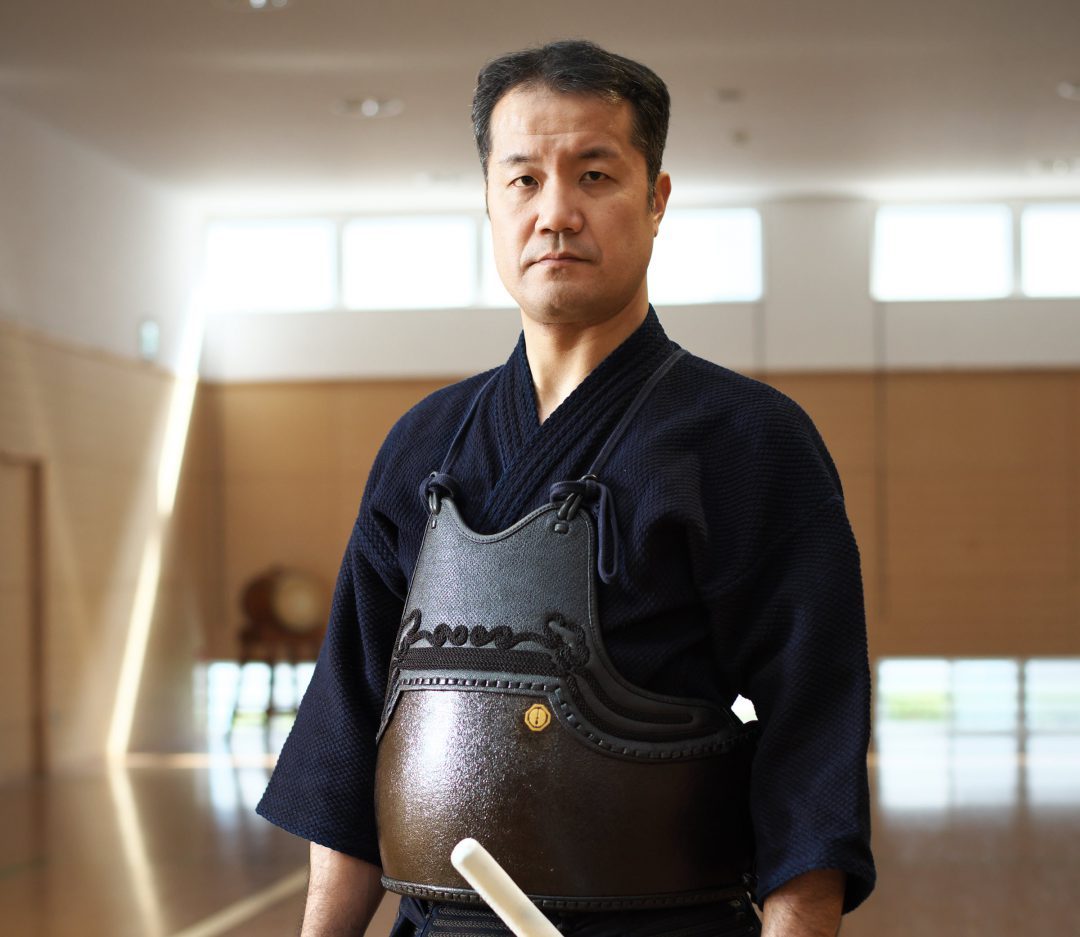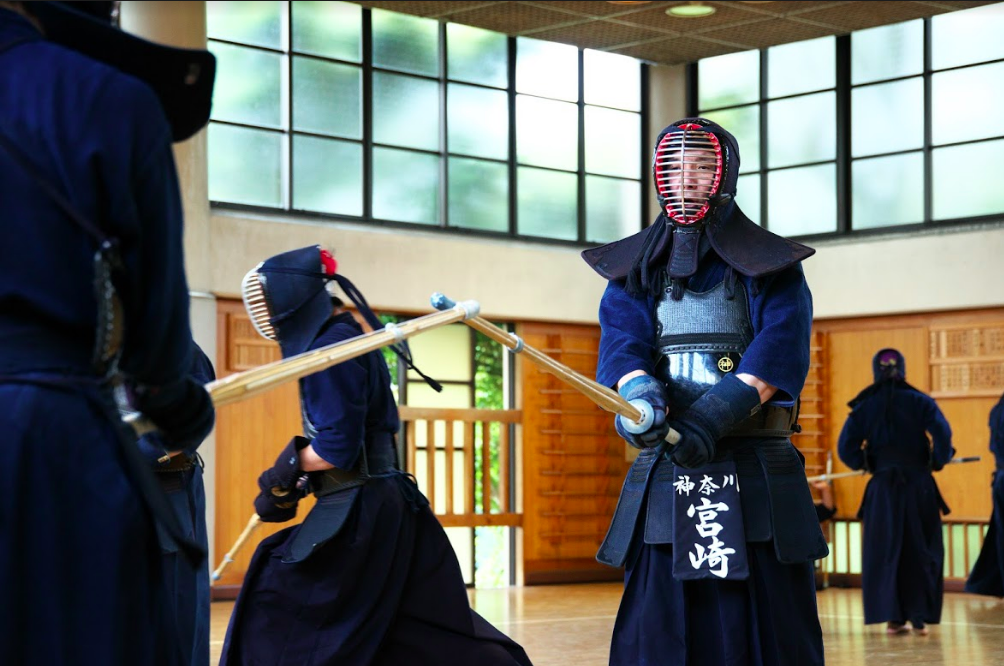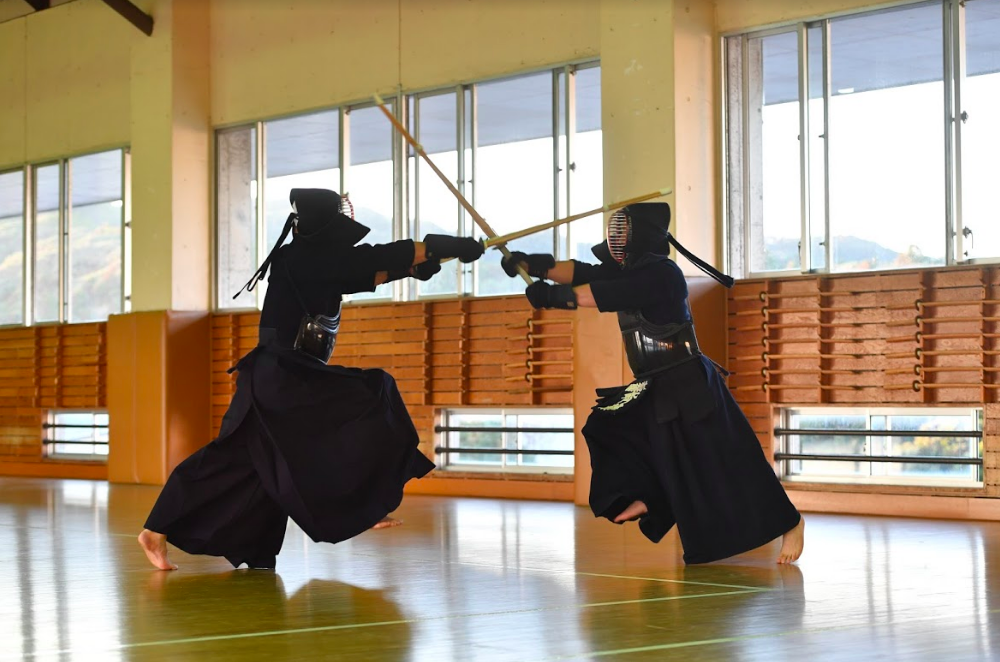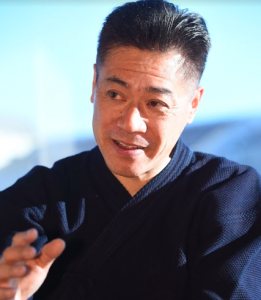The 15th All Japan Invitational 8th Dan Championship Victory.
Masahiro Miyazaki (Kanagawa Prefectural Police Kendo Chief Operating Teacher)
Always give your all practice, in Shiai fully exhaust that which is mastered.
As previously reported, Miyazaki Masahiro accomplished his first consecutive championship in the history of The 15th All Japan Invitational 8th Dan Championship. Miyazaki Sensei has always continued to be the champion of the times in the All Japan Kendo Championships, National Police Championships, and All Japan invitational 7th Dan Championships. He is working at the Kanagawa Prefecture Police as the chief operating kendo officer, and up until this day does not neglect the thorough practice of basics.
*Shooting = Sakai Takamasa
Thankfulness for thoughtfulness of instructors and the Tokuren.
– Congratulations on your first consecutive victory in the history of the tournament.
How is the experience of attaining at least a two win streak so far?
“I was aiming for the victory, but it is an honor to be able to participate, I was not so conscious of a win streak. The eighth Dan Championships have no selection matches, it is invitational. I felt great joy of being selected.”
– So there is value in being selected.
“Since I heard that there is a selection criteria of five years from the eight Dan acquirement, I feel there is a weight to that. So I felt it is obligatory to participate in the best condition by self improvement on top of competing. ”
-Was your application around new year?
“Yes, I had a strong motivation that I would have to face off by practicing well and build up my body.”
– The keywords “building up my body” came up but what exactly did you do?
“Although I piled up my practices to pursue myself, it is important not to get injured. You can call it self-management. This was also true for my active era. When participating I will do my utmost to compete. Not only during practice, but also in daily life I place importance on health management. Apart from health management it is only a matter of piling up practice. In my case in particular, there are members of the Tokuren at the workplace, so with regard to practice environment I have nothing to wish for.
– When you were in the Tokuren, getting results in competition must have been the most important thing. But being at the position of chief mentor now, what is the balance between nurturing competitors and your own training like?
“The director, coach, and Tokuren members do not put it into words, but they were thoughtful in ways invisible to the eye, and the practice menus had probably also been rearranged for me. I felt that thoughtfulness and atmosphere clearly. They also came all the way to Nagoya from Kanagawa to cheer for me on the day of the championships. I am thankful from the bottom of my heart.
– What kind of training content was it?
I joined them from Uchikomi Keiko practice onwards. It doesn’t go quite like the Tokuren members, but I joined their ranks and repeated trainings. After a break we went into regular instructional sparring with teachers. Even though instructional I refrained from teaching, and we sparred as equals and I continued as long as my body would allow. It’s not good to leave any fatigue, so I had to debate with my body when to quit. It’s very difficult to tell when it is time to stop.”
“I got it from the driving practice, I do not go as well as the experts, but I had them repeat the lesson after having taken a break.It is a normal teaching practice after a break.It is a teaching practice However, I did not do it like receiving it, I worked as an exercise for consistent practice and continued as long as the body moved, so I should not leave tiredness, so I will consult with my own body where I should quit I have to decide, but the timing to stop training is really difficult. ”
-From what point on did you really start training to prepare for the 8th Dan championships?
“Up until three days before the tournament I trained as usual, and after that I transitioned into adjustment training which would not leave me tired.
Continue Reading




